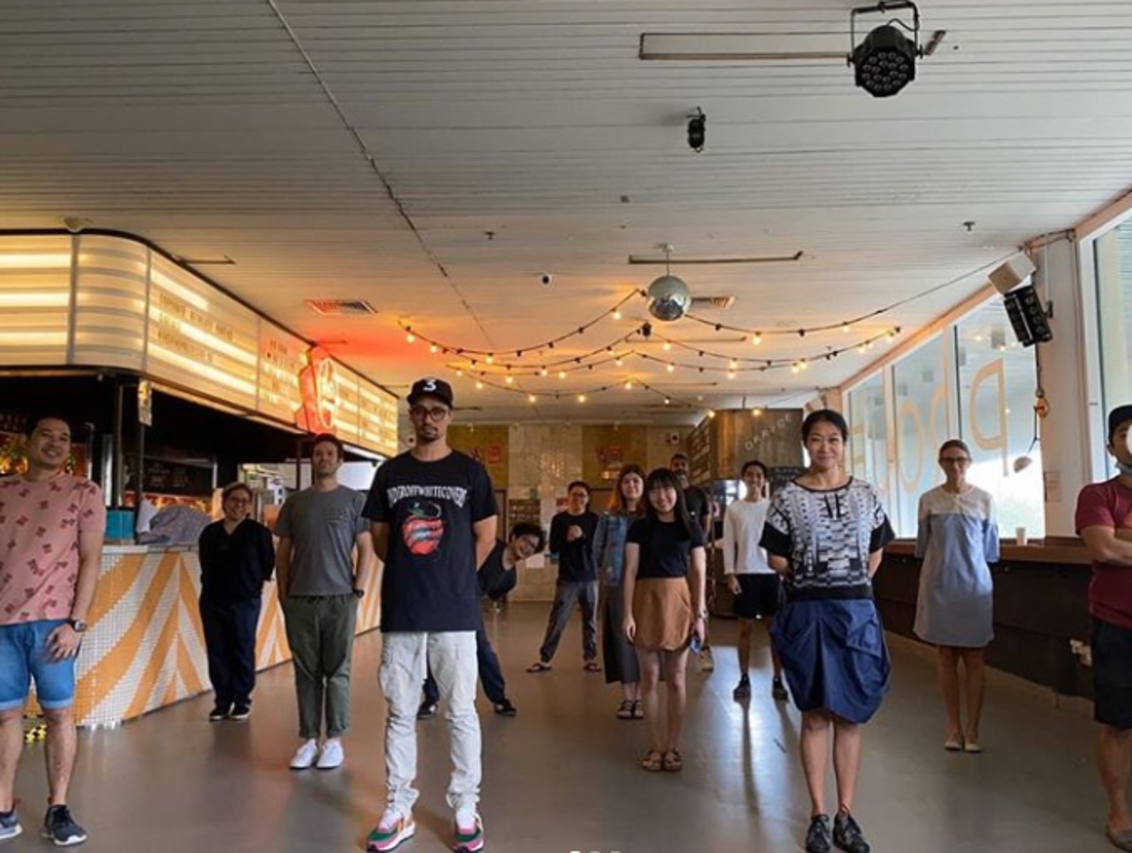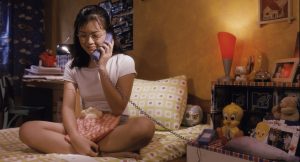All images courtesy of The Projector.
“How do you translate community during a shutdown?” Karen, one of the co-founders of The Projector, echoes my question, more to herself than to me. There’s a long pause. “It’s hard.”
Nearly three weeks have gone by since the entertainment venue closures kicked in on March 28th. Since then, the team’s projectionists have gone in once a week to keep their systems warm, but the normally buzzing space housing Singapore’s foremost independent cinema has come to a standstill.
No audiences chuckling at the infamous Turkish Luke Skywalker PSA. No LGBTQ+ film festivals or Bohemian Rhapsody singalongs. No savagely competitive Quiz Nights, no earnest post-film panel discussions, no partygoers spilling out into the carpark for some fresh air.
Such silence is unprecedented at an institution credited with breathing life into Singapore’s cultural landscape. The team, however, is using the downtime to chew on an existential question: how do you take your business online when almost everything you’ve built it on—presence, participation, joy—is at odds with the circuit breaker?
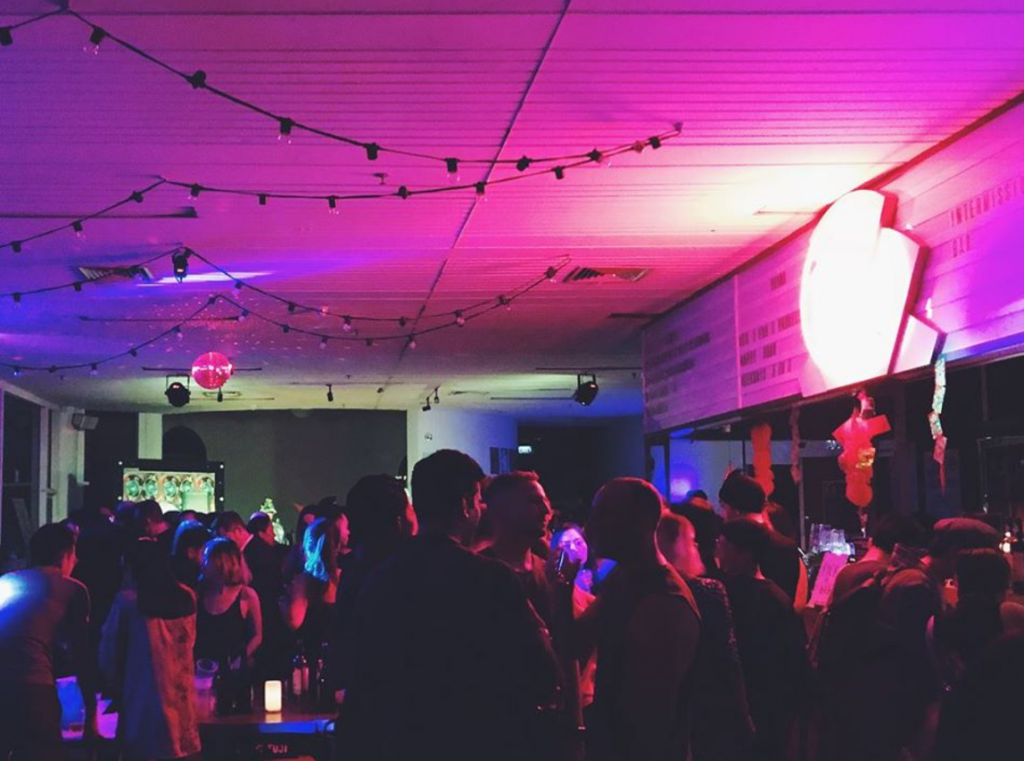
Five years since its inception, it’s impossible—not to mention heartbreaking—to imagine Singapore without The Projector. It punches far above its weight as a small, 550-seater cinema with just three halls, adored for its irreverent charm as much as its diverse and experimental programming.
For the uninitiated, it’s the sort of place which would screen a local documentary about migrant workers (I Dream of Singapore), an Oscar winner (Parasite), a live recording of Cosi fan Tutte, and a feel-good tearjerker about cats (The Travelling Cat Chronicles), complete with charity adoption drive in the foyer, all in the same day.
“It was very emotional on the Friday we went dark,” says Karen. Still, despite the closure, the team has been “crazy busy”.
Like every other SME, business continuity is at the top of their priorities. The costs that go into running a cinema-slash-bar-slash-event space are substantial; they decline to break the figures down for me, but their merchandise drive placed the costs of operating the Projector at over S$100,000 per month.
At the time of our interview, the team was negotiating a rent waiver for the duration of the shutdown. (Their landlord has passed the first tranche of property tax rebates, as announced in the Budget, on to them fully.) If successful, Karen and Prashant hope this will help with their other main goal: preserving jobs.
“One of our key priorities isn’t just to emerge intact as a business, but as a team,” says Karen. “They helped build The Projector into what it is, and continue to contribute to what it stands for, its vibe and its energy … they’re a key asset of our business.”
The company employs 14 full-time staff, plus several part-timers who help man the bar. Often, they end up juggling multiple roles. The programmers help to man the box office; their cleaning auntie checks tickets at the door.
“There’s usually a lot of doubling up, but as a result, there isn’t any fat to cut,” says Karen. “If it came to a point where we had to cut the team, we’d be cutting away muscle by then.” The wage support measures announced in the Budgets will tide them through till May, but anything beyond that is uncertain.
One silver lining, however, is that the team has adjusted to working from home relatively well.
“We’re still pretty much a startup entity, even though we’ve been around for five years,” says Prashant, the cinema’s general manager. “So when the closure happened, I think we still had that ethos, so it was pretty easy to reorganise everyone … There was that initial ‘oh shit’, but I think we got over that quite fast.”
Since then, they’ve been pouring all their energy into figuring out how the business—in startup language—can pivot to digital.
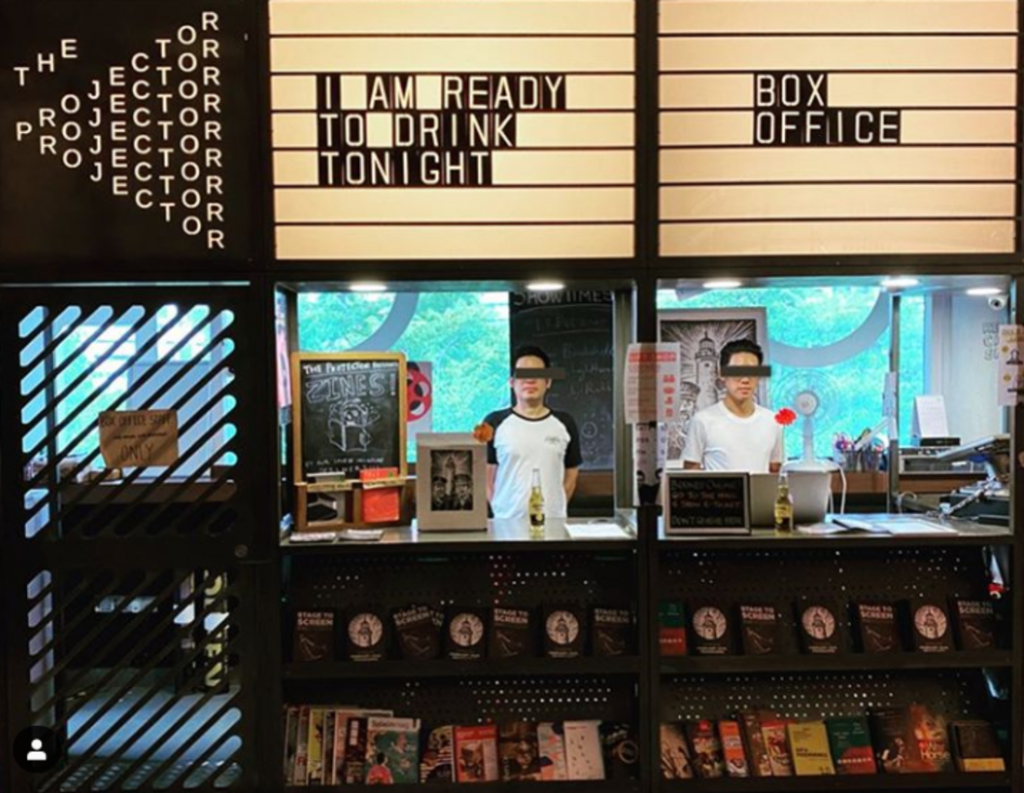
This is no small feat. Covid-19 has not only taken down the three pillars of their business (the box office, F&B, and events and venue hire); it has also threatened the essence of cinema-going itself.
For an activity which can be deeply introspective, going to the cinema is grounded in a kind of public consciousness. There’s an inherently social element to sitting shoulder-to-shoulder with hundreds of other people in the dark, a communal alchemy no home viewing party can ever hope to match. Cinema-going is about fellowship as much as it is about escapism. The magic comes in getting collectively lost.
None of this is compatible with social distancing. On top of this, much of The Projector’s personality is tied to its physical environment, and how this helps bring their patrons together.
Although Karen and Prashant joke that The Projector is ‘an Excel sheet which somehow became a cinema’, it was never meant to be just a glorified black box. Everything about its physical setup, from the bean bags in the halls to the box-office lettering to the posters in the toilets, was designed to make it the antithesis of the chain-cinema experience (which Karen describes as “oddly lonely” and “like visiting the library”).
As such, The Projector might be better classified as part of the experience economy than a straight-up movie theatre. Their programming emphasises audience participation, spanning events from sing-a-long movie musical screenings to post-show Q&A sessions. Fun is non-negotiable. Comfort and inclusivity are key. Every person’s presence adds up to something much greater.
“We want people to leave us having done more than just watch something,” says Prashant. “This value-add is a key part of our cultural programming. If you’re going to get out of bed and come to the cinema, we try to make it a community experience.”
Unfortunately, neither community nor experience are things which translate easily to the online sphere, and bed is precisely where most of us are watching movies from these days.
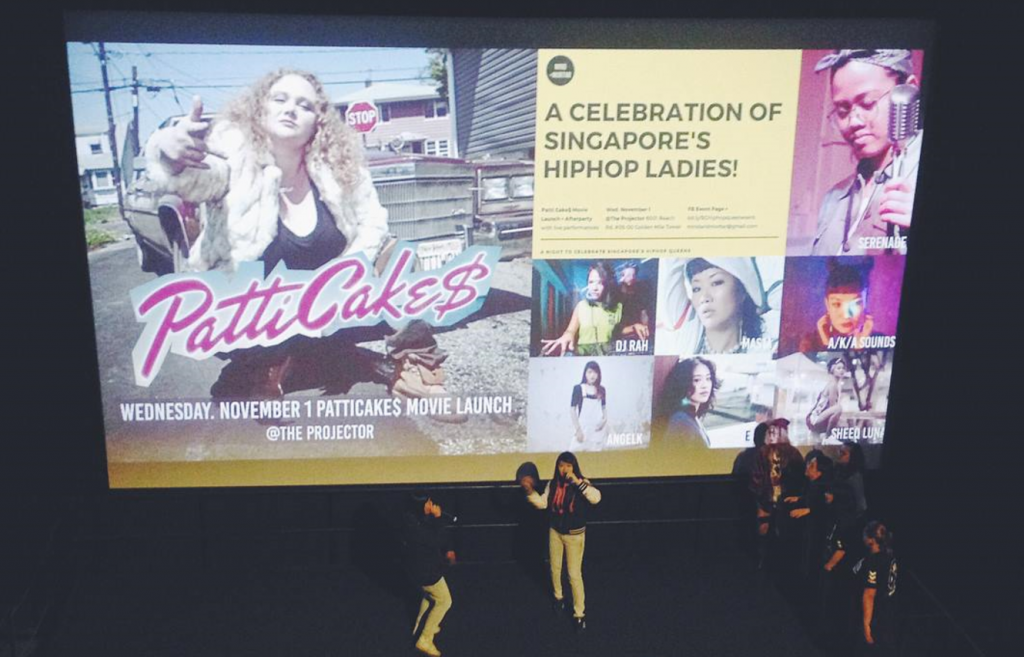
Taking The Projector online brings opportunities, but also plenty of challenges. They will have to fight not just for audiences’ time, but also their attention vis-a-vis emails, reading the news, Animal Crossing, and sleep.
Then there are streaming platforms like Netflix, against which they must hold their own as an ‘alternative night out’, albeit without the collective energy of 200 attendees to draw on. The online Projector experience will have to recreate the sparkle of the real-life one—its exuberance and filthy humour and above all, its togetherness—from viewers’ bedrooms.
“We obviously can’t leverage the physical space, but it’s also about continuity in terms of engaging our community,” says Karen.
“Thankfully, we do quite a bit of that already via social media, so now it’s like, how do we engage them on these platforms? Say, our panel discussions. Do we bring that to IG Live? Is this a Zoom situation? Is this something the consumer will take to?”
A couple of weeks ago, they helped Anticipate Pictures, one of their main distributors, promote one of its first post-shutdown online events: a watch party of Portrait of a Lady on Fire hosted by author Amanda Lee Koe and filmmaker Kirsten Tan, followed by an Instagram Live Q&A session with a filmmaker and a photographer. Although they decline to provide exact figures, they estimate the Q&A segment drew around 600 engagements—a response they were “pleasantly surprised” by.
Since then, they’ve begun testing the waters, making several films available on-demand and organising a short film competition. (“I guess people really are bored at home, some of them have pretty high production value.”)
Still, getting their audience to migrate online with them is a mammoth task which has only just started.
“I guess the challenge is now trying to figure out what The Projector experience is in an online space, and how it’s different from HBO Go or Netflix. To be honest, we don’t have an answer for that yet; we’re in an experimental, learning phase and trying to see what works,” says Prashant.
“Personally, I find it quite an exciting time because we get to test and learn stuff as well, but I don’t think we have any definite answers at this point. It’s way too early in the game,” adds Karen. “Still, these are real challenges we face.”

Just how real becomes clear when I ask if their online activities are their only source of revenue at present. There’s a pause before Karen says, “Yes, pretty much,” during which I am seized by pure fear. It’s going to take a lot of rentals of Sorry We Missed You to make up anything resembling their box office takings.
Ironically, their much-publicised merchandise push, which was up and running within days of the closure, was the easy part. Although it did “much better than expected,” says Karen, “[W]e can’t merch our way out of this crisis for the rest of the year. That much is obvious.”
What the drive did was secure them breathing space to prepare for the long haul. That said, you can only buy so much time with tote bags. The financial cushion will tide them over for the next month or two, but the fallout from Covid-19 will last way beyond that.
The film industry, as a whole, has been battered by Covid-19. This year’s Oscars squeaked by, but festivals like Tribeca and Cannes have been cancelled or postponed. Film sets have shut thanks to social distancing, which means a shortage of releases down the road. Filmmakers, especially independent ones, might not have the resources to keep up their work. And the medium-to-long-term changes in consumer behaviour are even harder to predict.
“It’s not just the production landscape, but the regulatory one too. Even when cinemas reopen, it doesn’t mean we’ll be able to have a full house,” says Karen.
“Consumer behaviour won’t go back to what it was; people might not be comfortable sitting close to each other in air-conditioned spaces. There might be different degrees of social distancing requirements that might still be in place. Or God forbid, there’s another spike [in cases], and everything goes into shutdown again … there are lots of permutations in terms of how things might play out.”
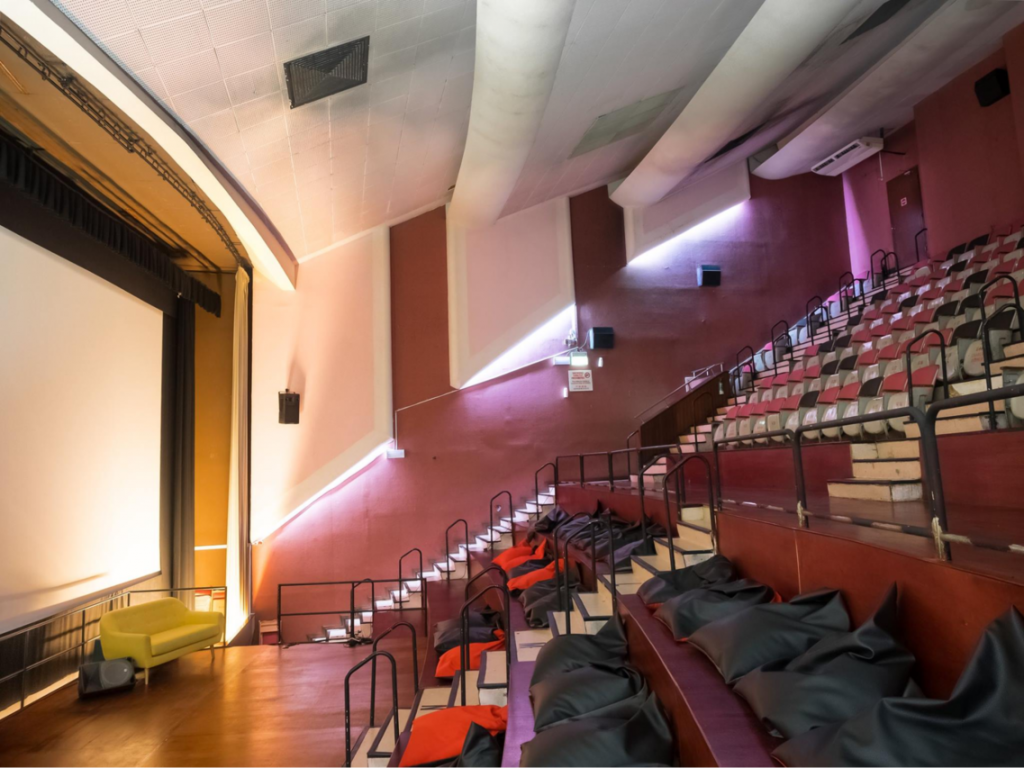
Money and art have always had an uneasy relationship, and The Projector has always been more willing to embrace unconventional content than most. Still, even the most adventurous, arthouse, punk-rock business is still a business. Its survival rests on that age-old question: are you willing to pay for the things you love?
Their merchandise push was only the tip of the iceberg. Persuading people to shell out $25 for a tote bag is one thing; nudging them to continually choose their video-on-demand offerings over Netflix’s infinite buffet is another. In an environment where we have all been conditioned to pay as little as possible, for as much variety as possible, the team knows this will take some difficult behavioural shifts to drive.
Moreover, part of their merchandise drive took the form of pre-paid vouchers, meaning that when the space reopens, this income will already have been accounted for. (“We might have to sell more beers,” quips Prashant.)
Where they are now is reminiscent of The Projector’s earliest days, when they famously raised over $70,000 of the initial capital via an Indiegogo crowdfunding campaign. As part of the current drive, they’re also running a pay-it-forward initiative, where supporters can purchase tickets for strangers. Creating a people’s cinema, underpinned by a sense of collective ownership, was exactly how they started.
“We will remain eternally grateful to everyone who supported us then, because we wouldn’t have gotten this far without them,” says Karen. “This time, the merch push does feel a bit like that, but also the pay-it-forward initiative, because crowdfunding is about more than money. It’s also a channel for people to come together to stand for something and take action, to literally put their money where their mouth is.”
“It’s like, if you want to see something happen, and you believe in it— if you want it to continue, then you stand behind it by participating in crowdfunding. I guess it’s a way of allowing people to take action, to contribute. To take ownership of what you’re building.”
“Still,” she adds, “if someone waltzed in and wrote us a million dollar cheque, we’d fucking take it.”
“We’ll name a hall after this person. You get hall naming rights,” chimes Prashant.
As our laughter subsides, the uncertainty which lingers is palpable. Everything they’ve just told me is contingent on the shutdown only lasting a couple of months; anything beyond that would change the picture drastically. Asking the same questions in a few weeks’ time might yield completely different answers.
While they’re looking forward to their return to Golden Mile Tower, they will be treading carefully. There won’t be a huge reopening party. The Red Room might not be packed out for several more months. The VOD rentals and Instagram Live Q&As will almost certainly become semi-permanent. Everyone is holding their breath, but for now, the credits aren’t rolling just yet.
Do you miss Turkish Luke Skywalker? Write in and tell us how much at community@ricemedia.co.

